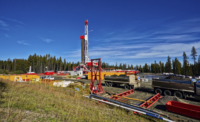Julie Vastine is Director of the Alliance for Aquatic Resource Monitoring based out of Dickinson College. ALLARM started in 1986 enlisting the help of average citizens to monitor streams for the impacts of acid rain. Since the early 2000s, the program has encouraged citizen science to help communities answer their own questions about the health of their local watersheds.
Then, the shale boom hit. Vastine says the big question lately has been how all the drilling and fracking and laying of new pipelinesmight be affecting thousands of miles of Pennsylvania’s streams.
About 85 percent of ALLARM’s volunteers are working in places where gas drilling has not yet started and are collecting baseline data for the future.
“There are limited resources by state agencies, regional agencies to do monitoring, so it’s obvious that we need more boots on the ground to be able to collect water quality data,” she says.
Today, ALLARM has more than 500 volunteers using monitoring tools to sample streams in Pennsylvania, New York and West Virginia. All of them have been trained in the program’s strict protocol to detect pollution and to report problems to state regulators. According to Vastine, volunteers have reported 42 potential violations, including several cases of stream erosion and methane migration, which can show up as pockets of bubbling in waterways.
Vastine says some people are drawn to the program because they like being part of scientific research. Others got involved out of worry about fracking’s impact on the environment.
Source: http://stateimpact.npr.org







